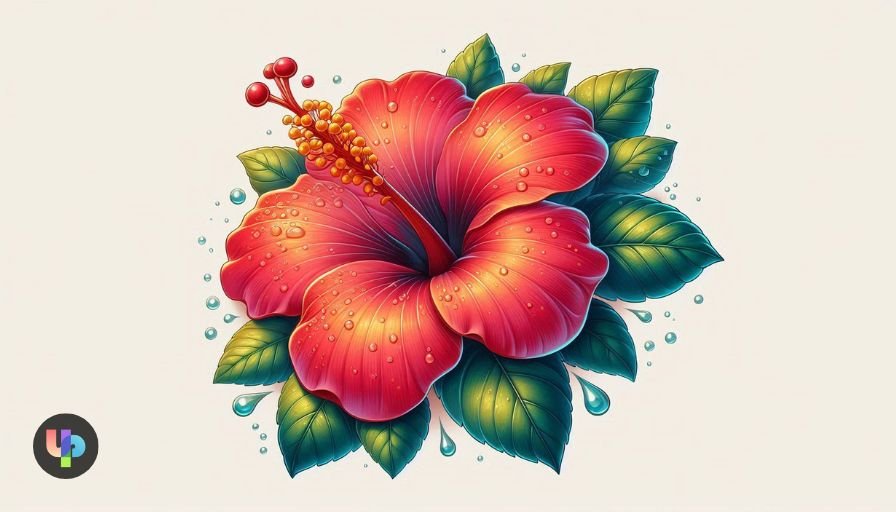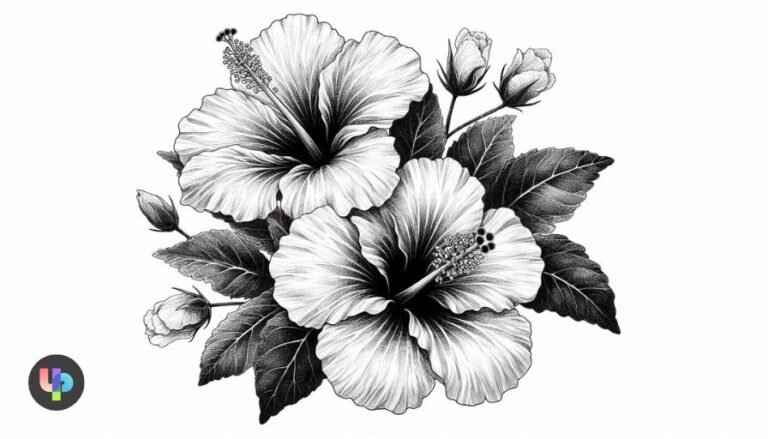The hibiscus flower, known for its vibrant colors and distinctive petals, is a popular subject in the world of botanical art. The keyword “Drawing:Bclxr4vqzz0= Hibiscus” reflects the interest in capturing this tropical beauty on paper. Whether you are a seasoned artist or a beginner, drawing a hibiscus can be both a challenging and rewarding experience. This article provides a comprehensive guide to drawing a hibiscus, offering step-by-step instructions, tips on achieving realistic effects, and creative ideas for personalizing your artwork.
Getting Started: Materials and Preparation
Before you begin your hibiscus drawing, it’s important to gather the necessary materials. Here’s what you’ll need:
- Paper: Choose a quality drawing paper that can handle both pencil and color mediums.
- Pencils: Start with a 2H pencil for light sketching and progress to softer pencils like 2B and 4B for shading.
- Eraser: A kneaded eraser works well for lightening lines and correcting mistakes without damaging the paper.
- Colored Pencils/Markers: For adding color, choose a set of high-quality colored pencils or markers. Watercolors can also be used for a softer finish.
- Reference Image: Having a clear reference image of a hibiscus will help guide your drawing, especially for capturing the details and color variations.
Step-by-Step Guide to Drawing a Hibiscus

Step 1: Sketch the Basic Shape
Start by lightly sketching the basic shape of the hibiscus flower. Draw a large circle for the flower’s center and add five petal outlines radiating outwards. Each petal should be roughly the same size and shape, but with slight variations to create a natural look. Use soft, curved lines to give the petals a realistic, flowing appearance.
Step 2: Add Petal Details
Once you have the basic outline, begin adding details to the petals. Hibiscus petals have a delicate, ruffled texture with subtle veins running from the base to the edges. Use your pencil to lightly sketch these veins, paying attention to the natural flow of the lines. This step adds depth and realism to your drawing.
Step 3: Draw the Flower’s Center
The center of the hibiscus, known as the pistil, is a prominent feature. Draw the pistil extending from the flower’s center, with a slight curve to mimic its natural appearance. At the end of the pistil, add the stigma, which consists of several small, rounded shapes. The stamens, thin filaments extending from the base of the pistil, should also be drawn carefully, with tiny anthers at their tips.
Step 4: Sketch the Leaves and Stem
Next, draw the leaves and stem of the hibiscus. The leaves are typically large with serrated edges, so use jagged lines to capture this texture. The stem should be thick and sturdy, supporting the weight of the flower. Adding a few leaves around the base of the flower can help balance the composition and make your drawing more complete.
Step 5: Refine the Drawing and Add Shading
With the basic structure in place, begin refining your drawing by darkening the outlines and adding shading. Focus on creating smooth transitions between light and dark areas to enhance the three-dimensional effect. Pay particular attention to the shading on the petals, leaves, and the flower’s center, where the depth of shadow will vary.
Step 6: Apply Color
If you’re using color, now is the time to apply it. Start with a base layer of your chosen color and gradually build up the intensity by adding additional layers. For a realistic look, use varying shades of the same color and blend them together smoothly. Don’t forget to color the pistil, stamens, and leaves, using appropriate hues to bring the entire flower to life.
Tips for Enhancing Your Hibiscus Drawing
- Experiment with Angles: Try drawing the hibiscus from different angles, such as a side view or a partially opened bloom. This will add variety to your artwork and help you practice different perspectives.
- Use References: Study real hibiscus flowers or high-quality photographs to understand the structure and details better. This will improve the accuracy of your drawing.
- Try Different Mediums: While colored pencils and markers are common, experimenting with watercolors or even digital painting can give your hibiscus drawing a unique finish.
Conclusion
The keyword “Drawing:Bclxr4vqzz0= Hibiscus” embodies the art of capturing the beauty and complexity of this tropical flower. By following the steps outlined in this guide, you can create a stunning hibiscus drawing that showcases your artistic skills. Whether you prefer a realistic approach or a more stylized interpretation, the hibiscus offers endless possibilities for creativity.
